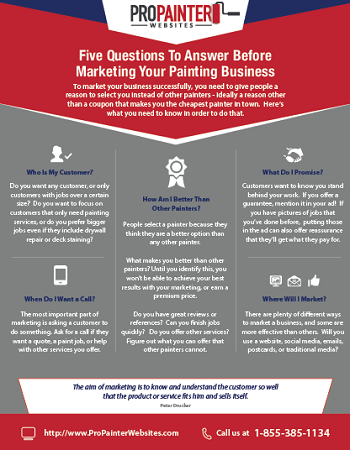Seasonal Factors In Business Exterior Paint: Trick Insights You Should Know
Seasonal Factors In Business Exterior Paint: Trick Insights You Should Know
Blog Article
Material Written By-Carlson Celik
When you're intending an industrial external paint project, seasonal aspects can make or damage your outcomes. You'll want to consider just how temperature and moisture impact paint application and drying out times. Choosing the appropriate season can ensure your paint sticks properly and lasts much longer. But which interior painting contractor near me are really the most effective for this type of job? Let's discover the crucial elements that can influence your project's success.
The Effect of Temperature on Paint Application
When you're planning a business external painting project, the temperature level can significantly affect just how well the paint sticks and dries.
Ideally, you want to repaint when temperature levels vary in between 50 ° F and 85 ° F. If painting contractor tools 's too cold, the paint may not cure properly, resulting in concerns like peeling or cracking.
On the other hand, if it's as well hot, the paint can dry too swiftly, stopping correct attachment and resulting in an irregular coating.
You need to also consider the moment of day; early morning or late afternoon offers cooler temperature levels, which can be more positive.
Always check the manufacturer's referrals for the certain paint you're utilizing, as they usually provide assistance on the perfect temperature array for ideal outcomes.
Moisture and Its Result on Drying Times
Temperature isn't the only environmental element that influences your business outside painting task; humidity plays a substantial role too. High humidity degrees can slow down drying times considerably, influencing the total top quality of your paint work.
When the air is filled with dampness, the paint takes longer to treat, which can cause issues like bad bond and a higher danger of mold growth. If you're repainting on a specifically humid day, be planned for extensive delay times between coats.
It's essential to keep an eye on neighborhood climate condition and plan as necessary. Ideally, go for humidity levels between 40% and 70% for optimum drying.
Maintaining these factors in mind ensures your project stays on track and provides a long lasting surface.
Best Seasons for Commercial Exterior Paint Projects
What's the most effective time of year for your industrial outside paint jobs?
Springtime and very early fall are usually your best choices. Throughout these seasons, temperature levels are light, and humidity levels are often reduced, developing excellent conditions for paint application and drying.
Avoid summer's intense heat, which can cause paint to completely dry too swiftly, resulting in poor attachment and surface. Similarly, winter season's cold temperatures can prevent correct drying out and treating, running the risk of the longevity of your paint work.
Go for days with temperatures between 50 ° F and 85 ° F for optimal outcomes. Keep in https://garage-painters-near-me20976.blogofchange.com/34946992/improve-your-living-environment-exactly-how-professional-home-painters-can-redefine-your-home to examine the local weather prediction for rainfall, as wet conditions can destroy your job.
Planning around these factors ensures your painting task runs efficiently and lasts longer.
Conclusion
In conclusion, planning your industrial external painting jobs around seasonal factors to consider can make a substantial difference in the result. By organizing job during the suitable temperature levels and humidity degrees, you'll guarantee far better bond and drying times. Remember to watch on local weather prediction and pick the right time of year-- springtime and early fall are your best options. Taking Discover More will help you accomplish a sturdy and specialist coating that lasts.
